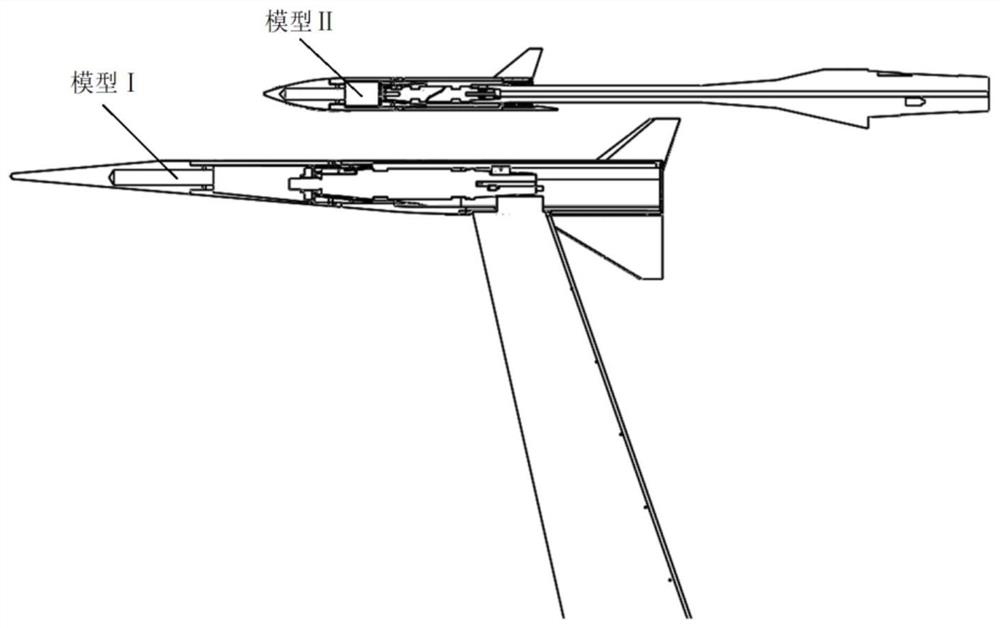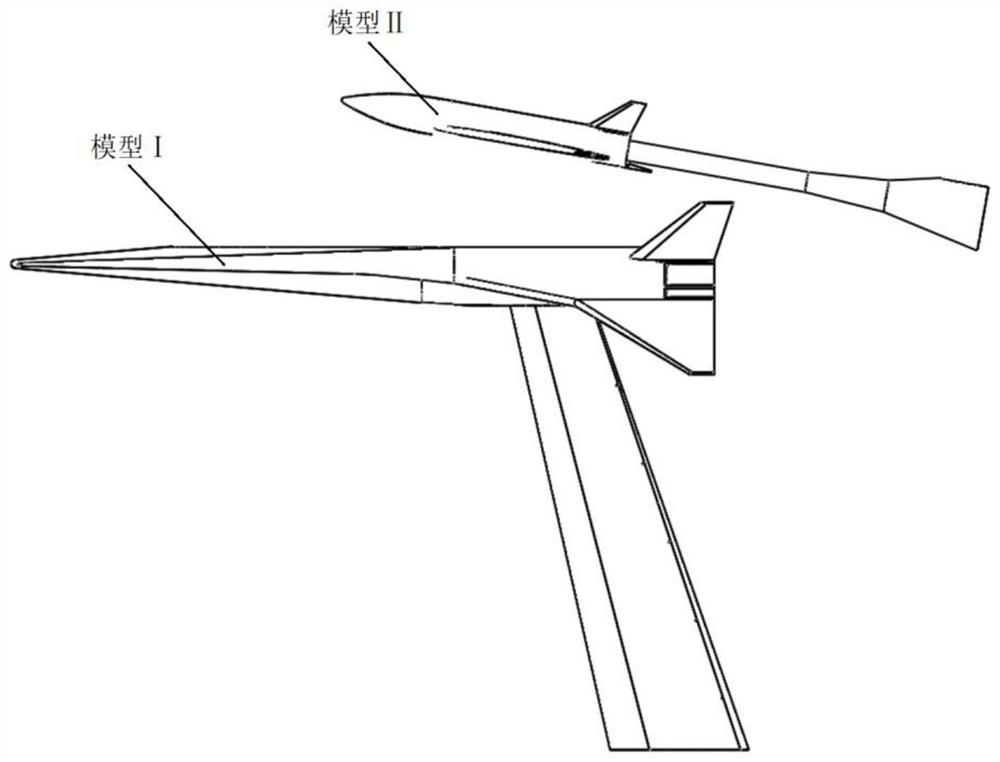Trajectory prediction method for wind tunnel multi-body separation test model
A technology of multi-body separation and test model, which is applied in the field of wind tunnel test, can solve the problems of single trajectory simulation requirements, wind tunnel test equipment damage, and CTS trajectory capture test is not widely popularized and applied, so as to achieve high timeliness and reduce costs Effect
- Summary
- Abstract
- Description
- Claims
- Application Information
AI Technical Summary
Problems solved by technology
Method used
Image
Examples
Embodiment 1
[0049] In this embodiment, the trajectory prediction method for the multi-body separation test model in the wind tunnel is applied to the two-stage orbit model, and the device used includes 2 models and 2 force-measuring balances corresponding to the 2 models. , two model supports corresponding to the two models one-to-one, and a test data acquisition, storage and processing system; including the following steps:
[0050] a. Process a set of multi-body separation wind tunnel test models, followed by model I and model II; each model has an independent force measuring balance, followed by balance I and balance II; each model also has an independent model support , the model supports are connected to their corresponding model support mechanisms; Model I and Model II realize six-degree-of-freedom movements through their respective model support mechanisms; the whole device is as follows: figure 1 shown;
[0051] b. During the movement of Model I and Model II, communicate with the...
PUM
 Login to View More
Login to View More Abstract
Description
Claims
Application Information
 Login to View More
Login to View More - R&D
- Intellectual Property
- Life Sciences
- Materials
- Tech Scout
- Unparalleled Data Quality
- Higher Quality Content
- 60% Fewer Hallucinations
Browse by: Latest US Patents, China's latest patents, Technical Efficacy Thesaurus, Application Domain, Technology Topic, Popular Technical Reports.
© 2025 PatSnap. All rights reserved.Legal|Privacy policy|Modern Slavery Act Transparency Statement|Sitemap|About US| Contact US: help@patsnap.com



